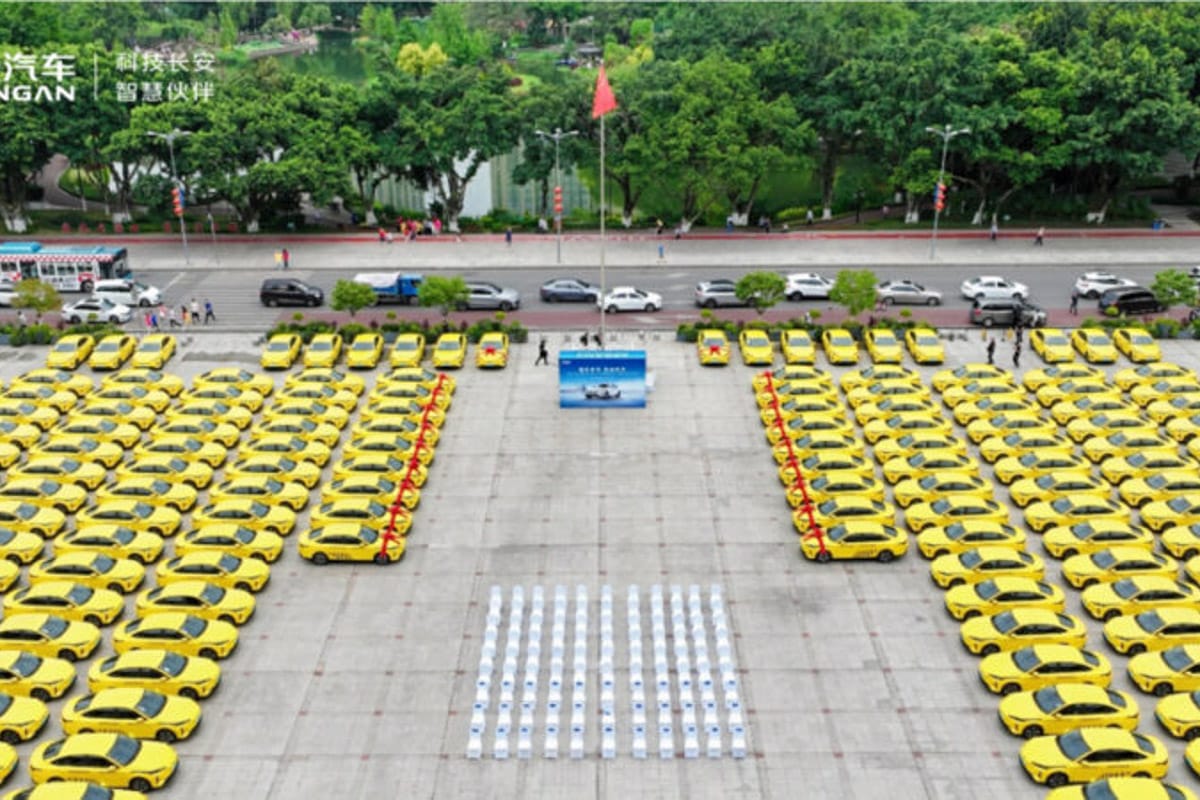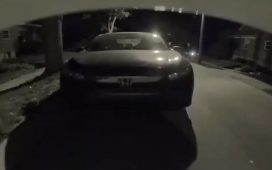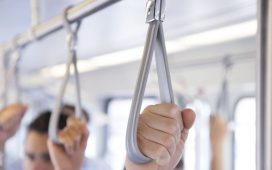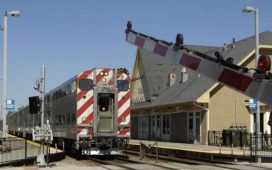At the handover ceremony for the 1,000 electric taxis, representatives from Changan stated, according to Chinese media, that Chongqing is the first city in which CATL’s Choco-SEB-compatible battery exchange stations have been set up – there are currently 34 stations in total, with the number set to rise to 50 by the end of the year. Each of the stations can hold up to 30 batteries ready for swapping. The swapping process itself should take less than 100 seconds, which is noticeably faster than the current standard battery swapping process of the Nio brand. The newer generation of Nios, which is currently only available in China at the moment, can swap the battery in three minutes.
The Changan Oshan 520 is the electric version of a combustion model, the Changan Eado. The mid-size sedan is 4.77 metres long, 1.84 metres wide and 1.47 metres high. The electric motor in the Oshan 520 has an output of 105 kW; the code number in the model designation is an indication of the vehicle’s range. In the Chinese CLTC standard test, the electric sedan has a range of 515 kilometres. In total, Changan has received over 15,000 orders for the Oshan 520 from corporate customers.

CATL presented two standardised battery packs of its Choco SEB system in December. SEB stands for ‘Swapping Electric Blocks’ and the suffix ‘Choco’ is an allusion to the appearance of the blocks, which are intended to resemble a chocolate bar. Choco-SEB was first mentioned in 2022, when the CATL subsidiary CAES (Contemporary Amperex Energy Service Technology) presented a battery swapping solution called Evogo – at that time, different numbers of blocks were to be used for swapping processes in order to cover different sized models on the one hand, and different usage scenarios with different numbers of blocks for short everyday journeys and long-distance journeys on the other.
However, the packs presented in December are two fixed sizes – the 20# is intended for small cars with a wheelbase of 2.20 to 2.30 metres, while the 25# is for vehicles with a wheelbase of up to 2.90 metres. The Oshan 520 with its 2.77 metre wheelbase will therefore use the 25# pack. With NMC cells, this pack offers 70 kWh of energy content, with LFP cells, it is 56 kWh. According to CarNewsChina, the packs with LFP cells will be used in Chongqing.
However, the Oshan 520 from Changan will probably not remain the sole user of the CATL exchange stations for long: A total of ten corresponding models are to be launched this year, including the GAC Aion S, the Hongqi E-QM5, the SAIC Maxus Mifa 9 and also the small car Wuling Bingo – although the latter is more likely to use the smaller packs of the 20# model.
CATL plans to set up a total of 1,000 battery exchange stations in China by the end of 2025. There will also be exchange stations built and operated by partners. These are the exchange stations for the Choco-SEB system, which is suitable for passenger cars. In addition, 300 battery swapping stations for electric trucks are to be added, which will use the block with the name 75#.








